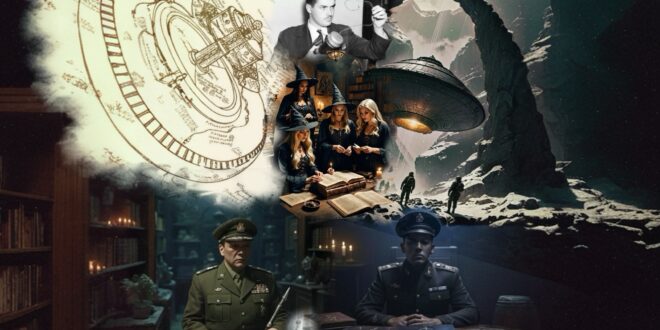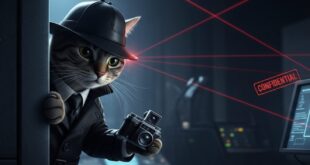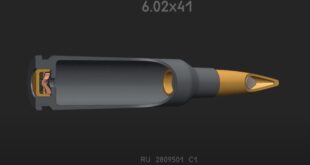by Austin Lee
Imagine a battlefield where the sharpest weapons are not forged in steel, but whispered in incantations and wit, where shadows cast by candlelit rituals eclipse the glare of spotlights, and the line between spy and sorcerer dissolves into the shadows. What if the most guarded state secrets were never locked in vaults, but hidden in the occult? Such as grimoires, passed through covens under moonless skies? From Roman legions coaxing enemy gods to defect with blood-soaked offerings, to 21st-century Russian witches channeling arcane forces to protect their president, history’s covert operations have thrived on the occult’s intoxicating blend of terror, belief, and deception. How deep does this invisible arsenal run? and who, in the end, truly commands the unseen? The psychic lens turns up a few examples that emerge through the mist.
Witchcraft’s Historical Role in Espionage
Witchcraft, historically associated with women who wielded esoteric knowledge, has long intersected with espionage due to its secretive nature. During the European witch hunts of the 15th to 18th centuries, accused witches – often midwives or healers – operated in clandestine networks, sharing information that could be leveraged for intelligence. Their ability to move unnoticed in communities made them ideal spies. In 1528, though, British witches took credit for calling up a powerful “witch wind” that was said to destroy the Spanish Armada. By the 20th century, the archetype of the witch as a keeper of hidden knowledge was exploited by intelligence agencies, who saw their unconventional methods as perfect cover for covert operations.
John Dee: The Occult Spy of Elizabethan England
In the 16th century, John Dee, an English mathematician and occultist, served Queen Elizabeth I as both advisor and intelligence operative. His expertise in alchemy and angelic communication masked his espionage missions across Europe, where he signed letters as “007,” a code that later was adopted by James Bond.
READ MORE from Austin Lee: Project Acoustic Kitty: The CIA’s Cold War Feline Secret Agent
Dee’s mystical persona provided cover for gathering intelligence, establishing a model for using the occult to veil covert operations. His work set a precedent for blending supernatural beliefs with military strategy, a tactic that persisted through centuries, as witches and mystics became conduits for secrets in times of conflict.
The Occult in World War II
During World War II, both the Allies and Axis powers experimented with astrology, pendulum dowsing, and psychic espionage. The British staged occult deception operations, planting symbols and prophecies to unsettle Nazi officers steeped in esotericism.
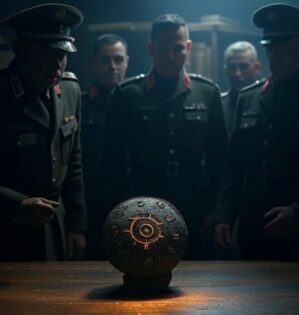
The Nazi regime’s Ahnenerbe, founded in 1935 by Heinrich Himmler, pursued occult research to bolster ideological and technological goals. The institute sought mythical artifacts like the Holy Grail, Spear of Destiny, Ark of the Covenant, and ancient spellbooks, conducting rituals at Wewelsburg Castle to unlock supernatural power. They also explored fringe sciences, including rumored antigravity devices like “Die Glocke,” possibly inspired by Sanskrit texts describing Vimanas—mythical flying machines from ancient India, that used spinning mercury propulsion engines.
The Ahnenerbe’s expeditions to the Himalayas sought ancient technologies tied to these myths, believing they held secrets to advanced flight. Nick Redfern’s Nazi UFOs links these experiments to post-war UFO sightings in Argentina, where Nazi scientists fled.
After WWII, Operation Paperclip transferred more than 1,600 Nazi scientists to the U.S., including Wernher von Braun, whose V-2 rocket expertise shaped NASA’s Apollo program. Declassified documents reveal Paperclip’s scope, with 86 aeronautical engineers among the recruits, fueling speculation that Nazi occult-inspired technologies influenced U.S. aerospace advancements. While mainstream historians dismiss supernatural claims, the transfer of advanced designs sparked UFO conspiracy theories, as exotic aircraft were mistaken for extraterrestrial craft.
Helen Duncan: The Last Witch of WWII
In 1944, Helen Duncan, a Scottish medium, was convicted under Britain’s 1735 Witchcraft Act, the last witch trial, for allegedly revealing military secrets during séances, including the sinking of HMS Barham. Her prosecution, criticized by Winston Churchill as “obsolete tomfoolery,” reflected wartime fears that occult practices could compromise security. Duncan’s case underscores how mediums and “witches,” often women with access to hidden networks, served as unwitting spies, their supernatural claims cloaking espionage potential.
Jack Parsons: Rocketry’s Occult Trailblazer
Jack Parsons, a co-founder of NASA’s Jet Propulsion Laboratory, was a rocket scientist and devout occultist whose work fused technology with mysticism. A follower of Aleister Crowley’s Thelema, Parsons conducted rituals with L. Ron Hubbard (founder of Scientology) to invoke supernatural forces, believing they could enhance breakthroughs in rocketry. His 1940s innovations in solid-fuel rockets revolutionized space exploration, but his occult practices, detailed in Sex and Rockets by John Carter, alarmed military officials.
Parsons’ belief that mystical forces guided his scientific discoveries echoed the Ahnenerbe’s ambitions, suggesting a cultural link between occultism and technological leaps. His mysterious 1952 death in a laboratory explosion fueled theories of espionage or occult sabotage.
Aleister Crowley and Cold War Psyops: Operations Often and Aswang
Aleister Crowley, the notorious occultist, worked as a British intelligence agent during WWI, using his anti-British persona to monitor German sympathizers. His rumored WWII role, including contacts with Nazi occultists, further blurred the line between mysticism and espionage. This legacy inspired Cold War operations that explored parapsychology and demonology, and employed magicians in order to teach deception for covert ops.
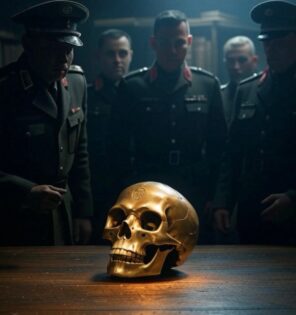
Similarly, Operation Aswang in the 1950s Philippines exploited the local aswang vampire myth, staging fake attacks with mutilated bodies to terrify Hukbalahap rebels. Led by Edward Lansdale, this psyop drove insurgents from strongholds using fear instead of bullets, proving folklore’s potency as a non-lethal weapon in psychological warfare.
Stargate Project: Psychic Spies
From 1972 to 1995, the CIA’s Stargate Project explored remote viewing—psychically “seeing” distant locations—for intelligence, driven by fears of Soviet psychic advancements. Physicists Hal Puthoff and Russell Targ at Stanford Research Institute led experiments, testing psychics like Ingo Swann, who reportedly viewed Jupiter’s rings before NASA confirmed them.
Puthoff, a former NSA scientist, and Targ claimed a 65 percent accuracy rate, with successes like locating a Soviet submarine in 1979. Declassified in 1995, Stargate’s $20 million legacy remains divisive, with supporters citing verified hits and critics highlighting inconsistencies.
The Pendulum Says…
From Dee’s coded letters to Stargate’s psychic spies, the military’s use of the occult reveals a persistent strategy to harness the unknown in order control what every army fears most: the unseen.
Whether through ritual, rumor, or mind games, the occult has always been a weapon aimed not at the body, but at the will.
As declassified files and ardent researchers continue to lift the veil, the question remains: What dark secrets still lurk in the shadows of military strategy?
Austin Lee is the proprietor of Galilhub, and is a gunsmith and a competitive shooter. He writes frequently for Soldier of Fortune.
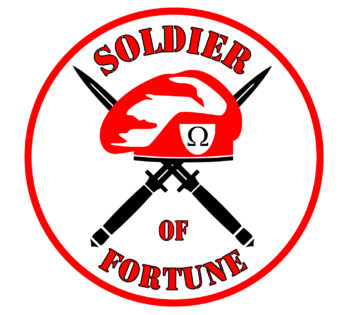
 Soldier of Fortune Magazine The Journal of Professional Adventurers
Soldier of Fortune Magazine The Journal of Professional Adventurers


